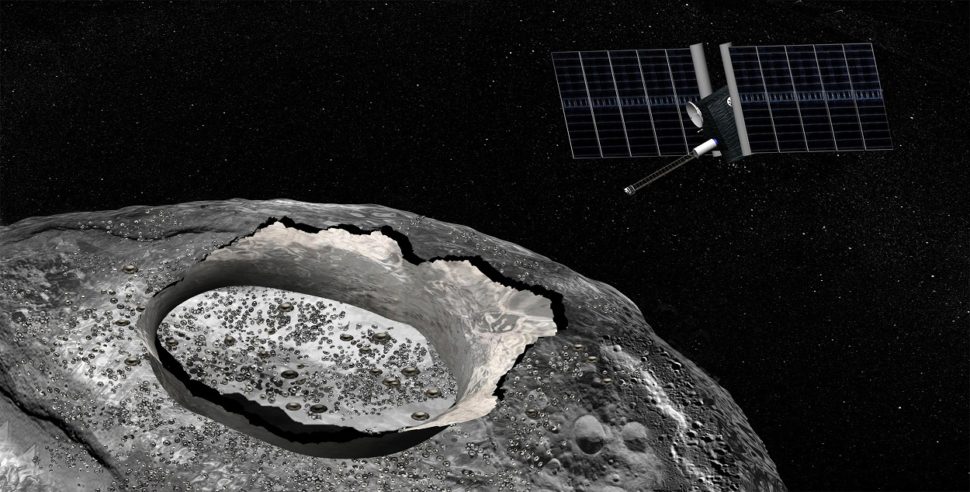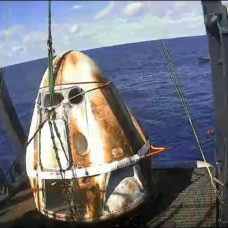Asteroids potentially rich in precious metals and water, in the form of ice, stir up investor interest. NASA, confirming its intention to exploit this heavenly manna, validated a new mission: to intercept an asteroid that contains virtually unlimited rare metals.
Treasure Hunt in Earth’s Backyard
Of the more than 9,000 asteroids listed by NASA whose orbit passes through the Earth’s corner of the Solar System, more than 1,500 are as easily accessible as the Moon.
One of these Near-Earth Asteroids (NEAs) is 16 Psyche which is entirely made of metal. Like the terrestrial nucleus, this 213-kilometer diameter asteroid is almost exclusively made of an alloy of ferronickel, with traces of other precious metals like platinum, rhenium, and iridium.
#16Psyche is an asteroid worth $10 #Quintillion USDClick To TweetAstronomers theorize that it could be the heart of a planet the size of Mars which never completed its formation process. Perhaps the asteroid suffered several collisions that ripped off its upper layers. 16 Psyche is one of the ten largest celestial bodies located in the main asteroid belt of our solar system between Mars and Jupiter.
NASA plans to launch an eponymous robotic mission in 2023 to reach and study Psyche. The mission is, along with Lucy, one of two selected among the five shortlisted missions of the Discovery program.
Psyche mission will study a unique object of its kind in the solar system because it’s almost exclusively composed of metal. While things are in motion, there is still a long way to go.
16 Psyche, an NEA With an Enormous, Albeit Theoretical Value
If we could somehow drag it back to Earth, the value of 16 Psyche would amount to 10,000 quadrillions of dollars (1 followed by 19 zeros). That’s millions of times more than the value of all the riches available on Earth.
However, two caveats arise. First, it would take seven years just to get to the exploitation site, and current technology doesn’t allow bringing back a piece of this space mine let alone the whole thing.
The second caveat is economic: the prices of the metals in question would collapse, according to the law of supply and demand.
Thus NASA doesn’t have a profit motive, yet. Psyche and other missions will open a window on what our Solar System was only 10 million years after the birth of the Sun.
Asteroids are witnesses of this time and haven’t changed much since. Thus, Psyche would be a sort of journey into the past to further refine our knowledge of Solar System formation.


















Comments (0)
Least Recent